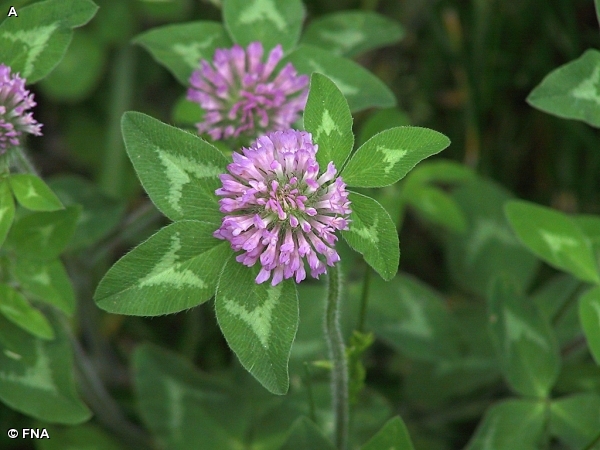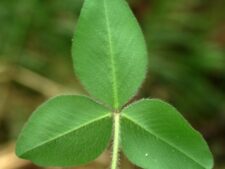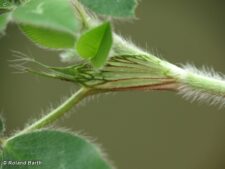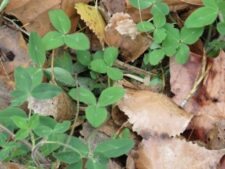
This plant was introduced from Europe and widely planted here; now it is fully naturalized. Hairy stems (B,C) can be up to 2 1/2 feet tall. The leaves have three rounded leaflets, with a lighter v-shaped chevron near their middle (A). At the base of the leaf stalk is a pair of oval to lance-shaped stipules with pointed tips (C). Numerous pea-like flowers are crowded on round, pink to purple flower heads , about 1 inch across. Usually 1 or 2 compound leaves occur immediately below the base of the flower head (A) .
Common in lawns, pastures, roadsides and disturbed areas locally. It is uncommon at Fontenelle Forest and and Neale Woods. At FF one is most likely to encounter it in disturbed areas on the floodplain. At NW it occurs mainly in old brome fields or the prairie restorations.
This clover was extensively planted as a pasture and rotation crop. It stores nitrogen in its roots and thereby improves soil fertility.
White Clover (Trifolium repens) also has pea-like flowers on round flower heads and 3 leaflets with chevron-like markings. Red Clover flower heads and leaves are larger, flower color is pink to purple, stems are hairy and there are usually 1 or 2 sets of three leaflets directly below the flower head. Alsike Clover (Trifolium hybridum) has similar flowers and flower heads, but no chevrons on the leaves.
The content of NatureSearch is provided by dedicated volunteer Naturalists of Fontenelle Forest who strive to provide the most accurate information available. Contributors of the images retain their copyrights. The point of contact for this page is: Roland Barth.

 Identification
Identification

